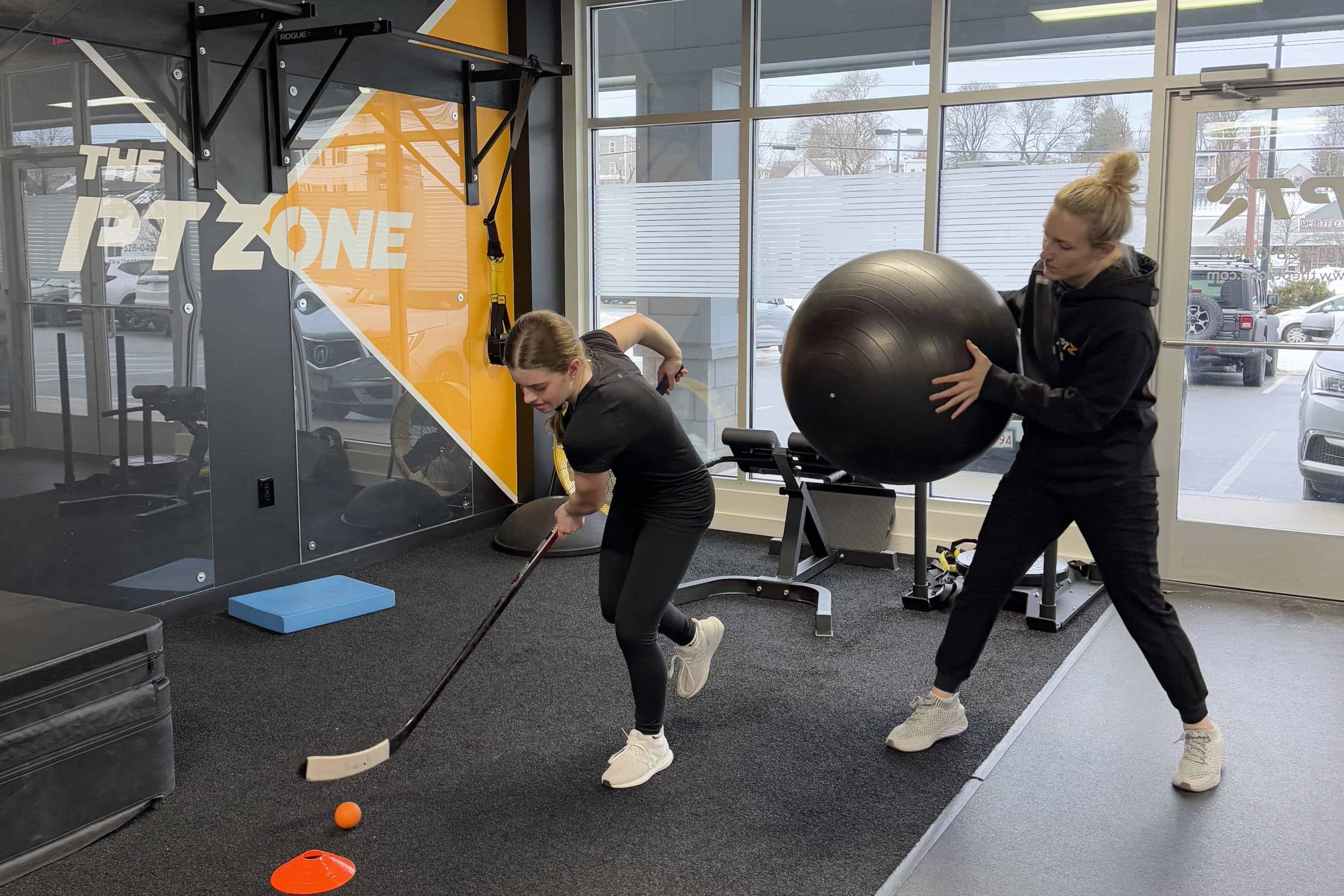Excel in Your Game with Sport Specific Training
- Customized drills and mechanics for your sport
- Boosts athletic performance through targeted exercises
- Reduces injury risk and fosters quicker recovery
- Enhances agility, strength, and endurance
- Optimizes functional movement patterns

What is Sport Specific Training
and How Does It Help?
Sport Specific Training is a targeted approach that hones your skills and mechanics for the sport you love—be it basketball, soccer, tennis, or beyond. By analyzing your sport’s movement patterns, we develop drills and exercises that mimic real-game situations, focusing on agility, coordination, and injury prevention.
Far more than just a generalized workout plan, this personalized programming zeroes in on the unique demands of your athletic activity. From explosive footwork to safe landing mechanics, our mission is to optimize your performance while reducing the risk of overuse or acute injuries.
We integrate strength, conditioning, and skill-based drills with the guidance of physical therapy principles—ensuring each move you make supports your body’s best function. Whether you’re returning from an ACL tear or perfecting that overhead swing, sport specific training bridges the gap between rehab and peak competition form.
We understand the passion of athletes and the frustration of being sidelined. Our individualized approach covers skill development, technique refinement, and functional re-education—helping you return to play quickly and safely. With an eye on endurance, agility, and mechanics, we help you become a more resilient competitor in your chosen sport.
Ultimately, sport specific training allows you to realize your maximum potential—strengthening your body’s performance capacity while minimizing the chance of reinjury or setbacks.

In The Zone
Conditions Sport Specific Training Can
Help Address: (A-Z)
ACL Tear
Returning to sport after ACL reconstruction requires careful skill drills to regain knee stability, confidence, and sport-specific movement patterns.
Achilles Rupture
Sport-specific drills help rebuild explosive movements and agility while ensuring safe load progression on the recovering tendon.
Ankle Sprains
Targeted balance, pivot, and cutting drills reduce the chance of recurrent sprains by restoring ankle stability and proprioception.
Elbow Epicondylitis (lateral or medial)
Sport-specific technique adjustments and forearm strengthening enhance racket or throwing mechanics to alleviate tennis or golfer’s elbow pain.
Joint Sprains (ankle, back, knee, neck, shoulder)
Controlled sport-mimicking drills build joint resilience and coordination, reducing recurrent injury risks during gameplay or practice.
Labral Tears (hip or shoulder)
After surgical repair or conservative treatment, sport-specific programming rebuilds joint stability and reinforces proper throwing or pivot mechanics.
Meniscus Tears
Skill-focused drills rebuild confidence in cutting and pivoting, strengthening the knee’s support structures for safe returns to sports like basketball or soccer.
Muscle Spasms
Focused training on hydration, flexibility, and muscle balance can help athletes minimize spasms during intense training or competition.
Muscle Strains (Biceps, Calf, Hamstring, Pec, Quadriceps, Rotator Cuff)
Reintegrating strength exercises specific to your sport ensures muscles heal fully and adapt to the intensity of gameplay or performance.
Patellar Tendinitis
Jump training, plyometrics, and knee stabilization exercises are carefully integrated to rebuild tendon resilience for jumping or sprinting sports.
Rotator Cuff Tear
Sport-specific overhead drills and shoulder stabilization work ensure a safe transition to throwing, swimming, or overhead lifts post-recovery.
Shin Splints
Tailored running form analysis and progressive loading routines help athletes overcome medial tibial stress for safe sprinting or endurance training.
Common Questions About Sport Specific Training
1. Is sport specific training only for elite athletes?
Not at all. Whether you’re a weekend warrior, high school athlete, or professional competitor, sport specific training is tailored to your level and goals. It’s about refining your technique, preventing injuries, and elevating performance—no matter your experience.
2. How does this differ from a general workout program?
General workouts build overall fitness but may not address your sport’s unique demands, like pivoting for basketball or rotator cuff endurance for baseball. Sport specific training zeroes in on the precise skills, movements, and muscle groups you need in competition.
3. Can sport specific training help me return to play after an injury?
Absolutely. After an injury, bridging the gap between rehab and full competition can be tricky. Sport specific training integrates therapeutic exercises with skill-based drills, ensuring you return safely and effectively to your sport’s demands.
4. How long does it take to see improvements in my game?
Results depend on factors like your starting fitness, injury history, and how consistently you train. Some notice better form and confidence within weeks, while others may require months of progressive skill work to unlock peak performance.
5. Do I need any special equipment?
Typically, no. We adapt programs to your environment—whether you train on a field, in a gym, or at home. If your sport uses specific gear (like a racket, ball, or specialized footwear), we incorporate that into your drills as needed.
6. Is sport specific training mainly for injury prevention, or can it improve my performance too?
Both. Injury prevention and performance gains go hand in hand. By refining your mechanics and strengthening key areas, you not only reduce injury risks but also boost your overall agility, power, and efficiency in your sport.
7. Can sport specific training be combined with regular physical therapy?
Absolutely. Many athletes use sport specific training in tandem with physical therapy to further expedite recovery and fine-tune athletic movements. This holistic approach ensures you’re addressing both rehabilitation and peak performance needs.














